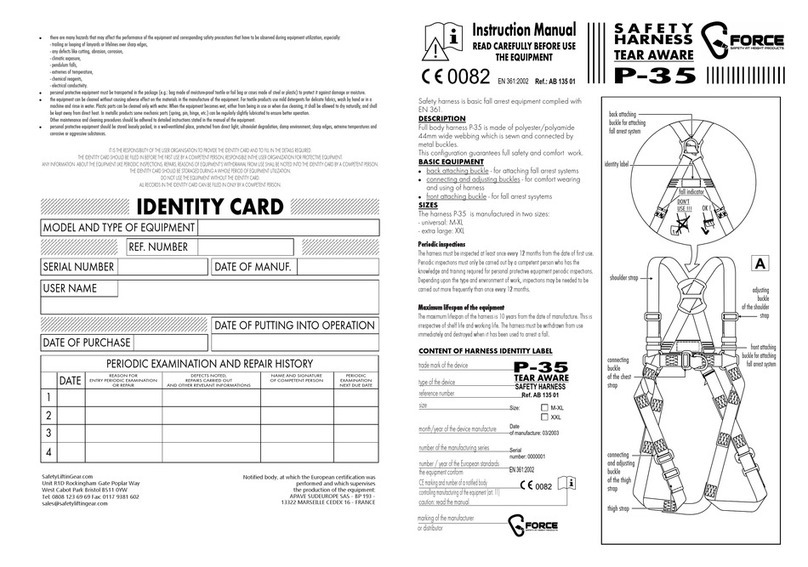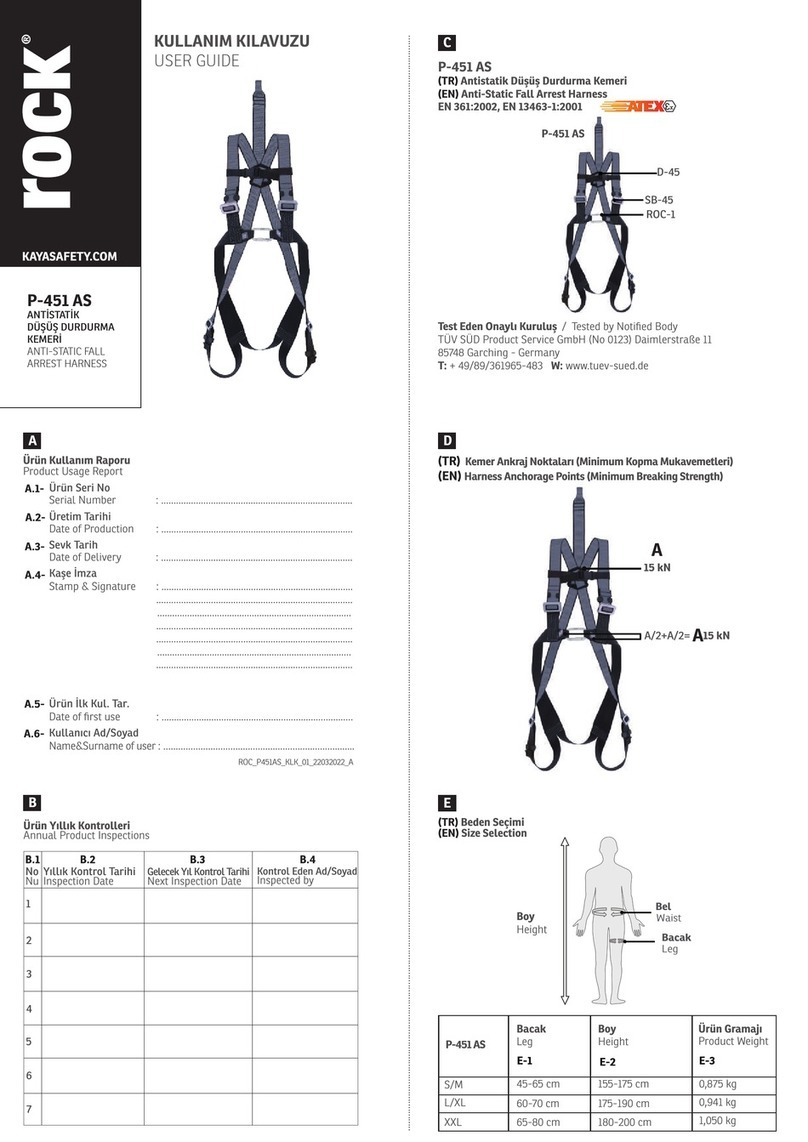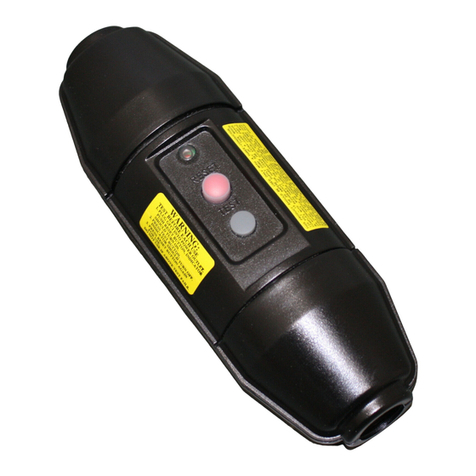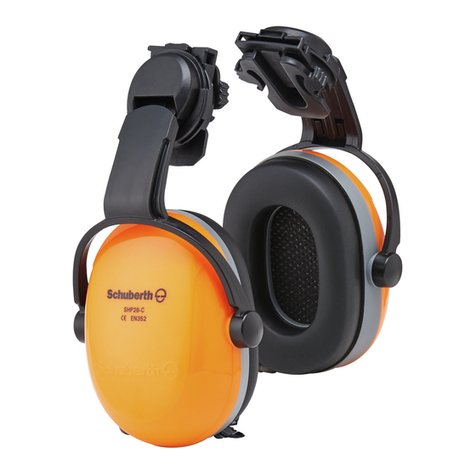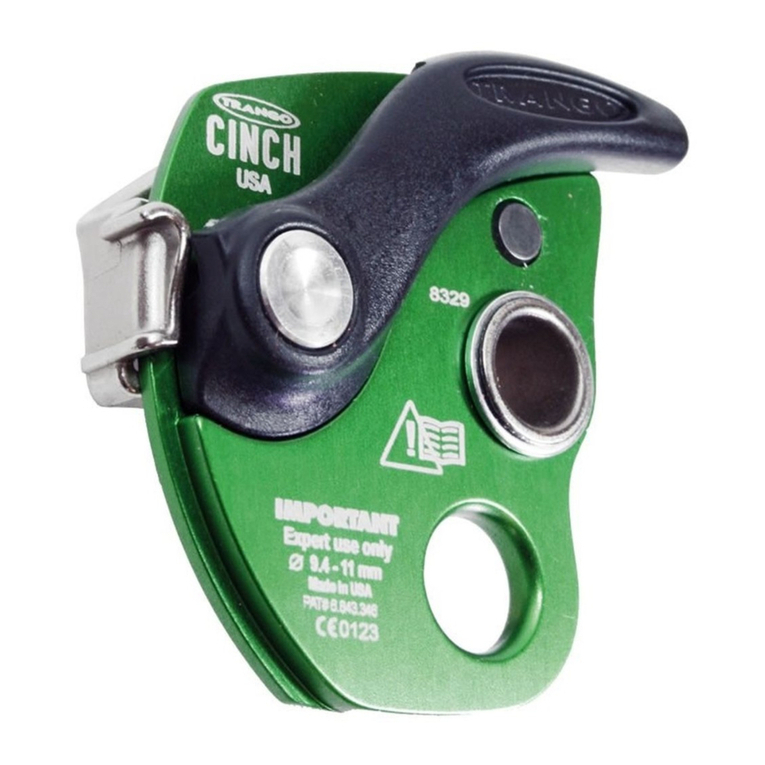
■ 4 │ DE│AT│CH FFSH 3 A1
■ Die Umhüllung der Dichtungskissen mit
„Hygieneüberzügen“ kann die akustische
Leistung des Kapselgehörschützers beeinträch-
tigen.
WARNUNG!
► Bei Nichtbefolgung der angegebenen
Sicherheitshinweise für die Helm-Kapselgehör-
schützer-Kombination, kann die Schutzwirkung
ernsthaft beeinträchtigt werden.
■ Das Visier muss beim Tragen immer herunterge-
klappt sein.
■ Das Visier schütz vor Gefahren durch herumflie-
gende Teile.
■ Das Visier schütz nicht vor spritzenden Flüs-
sigkeiten, heißen Gegenständen, Elektrizität,
Infrarot- und UV-Strahlung.
■ Benutzen Sie das Visier nicht, wenn ein vorher-
sehbares Risiko durch umherfliegende harte und
scharfkantige Gegenstände besteht.
■ Das Visier kann sich durch Späne und dessen
Harz zusetzen und die Durchsicht beeinträch-
tigen.
Montage
♦ Stecken Sie die Kopfhalterung mit allen 4
Laschen in die inneren Aufnahmen des Helmes
bis diese einrasten (siehe Abb. A).
♦ Stecken Sie die Halterungen des Gehörschutzes
in die seitlichen Aufnahmen des Helmes
bis diese einrasten (siehe Abb. C).
♦ Montieren Sie das Visier mit dem Gitter.
Setzen Sie hierzu das Gitter von unten in den
Schirm ein, bis dieses einrastet.
♦ Schieben Sie jetzt das vormontierte Visier in
die Aufnahmen des Gehörschutzes
(siehe Abb. D).
♦ Klappen Sie nun das Visier nach vorne
(siehe Abb. E).
♦ Schieben Sie jetzt das Visier bis zum An-
schlag in die Aufnahmen des Gehörschutzes
(siehe Abb. F).
Einstellung
Kopfhalterung einstellen Abb. A:
♦ Drehen Sie die Verstellung der Kopfhalterung
, um die Kopfhalterung an Ihren Kopfumfang
anzupassen.
♦ Beim Aufsetzen liegt das Kopfband straff auf
dem Kopf auf.
♦ Durch das Drehen der Verstellung der Kopfhal-
terung im Uhrzeigersinn verkleinern Sie den
Umfang.
♦ Durch das Drehen der Verstellung der Kopfhal-
terung gegen den Uhrzeigersinn vergrößern
Sie den Umfang.
■ Der Helm muss fest auf dem Kopf aufsitzen,
dabei aber nicht unangenehm drücken.
ACHTUNG!
► Benutzen Sie nur einen korrekt eingestellten
Helm.
Gehörschutz einstellen Abb. G –I:
Sie können den Gehörschutz jeweils in der Höhe
und in der benötigten Position einstellen.
♦ Drücken Sie die Halterung des Gehörschutzes
, um den Gehörschutzes am Ohr zu
arretieren.
♦ Verschieben Sie den Gehörschutzes , um die
benötigte Höhe einzustellen (siehe Abb. G).
♦ Drehen Sie den Gehörschutz , um die richtige
Position einzustellen (siehe Abb. H).
♦ Ein Auf- und Absetzen kann erleichtert werden,
indem Sie den Gehörschutz jeweils einzeln
nach außen klappen.
Sollte dabei die Spannkraft nachlassen,
justieren Sie diese nach, indem Sie über die
Verstellung des Gehörschutzes die Spann-
kraft einstellen.
♦ Schieben Sie die Verstellung des Gehörschut-
zes in Richtung „+“, um die Spannkraft zu
erhöhen (siehe Abb. I).
♦ Schieben Sie die Verstellung des Gehörschut-
zes in Richtung „–“, um die Spannkraft zu
verringern (siehe Abb. I).











